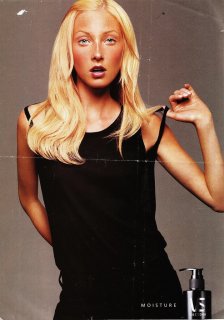Sali Hughes meets three of the original supermodels - and learns the secret to their enduring success.
Maggie Rizer
Maggie, 33, began modelling in 1997 and has since fronted campaigns for Clinique, Gap and Louis Vuitton. She is also a leading ambassador for a number of AIDS charities. A native New Yorker, Maggie lives in San Francisco with her husband, Alex Mehran, a property developer.
Success came suddenly for you, didn’t it?
Yes. My mum saw a special on Oprah about modelling and suggested it, but I was 17 and had already been accepted to college. I went, but hated it so, after my first year, we sent Ford Models some pictures and they asked me to go New York immediately. I shot a couple of covers for Italian Vogue with Steven Meisel and everything took off.
What was it like being a supermodel in the 1990s?
I had nothing to compare it with, so it felt normal – even though all my friends were at keg parties and studying, while I was living in a flat in Manhattan with Karen Elson and Erin O’Connor, travelling the world, shooting with amazing photographers and stylists, like Irving Penn, Steven Meisel and Grace Coddington – all legends! Looking back, I can see what an amazing experience it was. At the time, I was young and it was just my life.
Did any one occasion feel like a career high?
Doing the cover of American Vogue with Kate Moss. I thought, ‘They’ll use a shot of just Kate, why would they use mine?’, because every model aspired to be Kate. She has the best career. And she’s gorgeous, not some bitchy, stuffy supermodel. And she never looks like she’s trying. So when I made the cover, too, I was the happiest person ever. And, as an American, knowing that it would be on every newsstand I walked by in New York, suddenly made me feel I’d made it.
You’ve done a lot of AIDS charity work. Is it still important to you?
Yes. We just had the AMFAR (American Foundation for AIDS Research) gala that I co-chaired, and I’ll work with them until there’s a cure. My dad (Kevin Rizer) died of AIDS in 1992 when I was 14 and I’m in such a fortunate position to have a voice, to help people, raise money, raise awareness and fight the battle against HIV and AIDS, that I feel it’s my duty. If I can save one young girl from losing her father to AIDS, or one family from losing a father or mother, or a baby from dying, then it’s all worth it.
What’s next for you?
I love modelling and hope it will continue for as long as possible, but whatever happens, I want to work in fashion somehow because I love it. I’m going to start college at the Academy of Art in San Francisco this year, to study for a BA in fashion. I was doing a quiz last summer and I bombed in the fashion category. I was so mad at myself that I decided to learn more about fashion and its history. I’ve been in the job for 14 years, I should know everything at this point.
Do you feel in a happier place in your thirties than in your twenties?
I’m in a different place altogether. I’m more confident and comfortable. I’ve figured it out. I think in your twenties you’re trying to get the answers: ‘Who am I?’ ‘What do I want?’ Also, getting married makes a difference; I think the answers came from finding the right person. I don’t think I could have done it on my own.
Where do you see yourself in five years?
I don’t have a grand plan. I’d like to see myself starting a family and still working and becoming a better version of me. I guess that would be fine.




 congratulations Maggie!
congratulations Maggie!


 [URL=http://img13.imageshack.us/i/rze3.jpg/]
[URL=http://img13.imageshack.us/i/rze3.jpg/] [/URL]
[/URL] 





